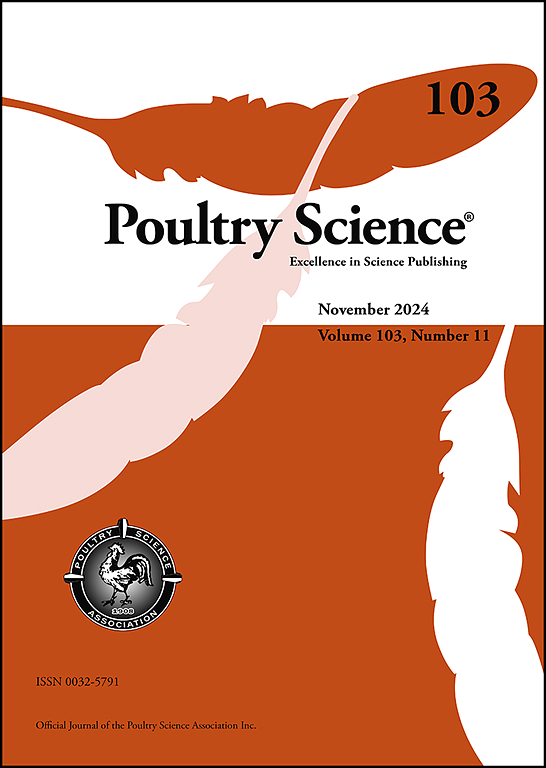Development of a blocking ELISA employing a VP1-specific monoclonal antibody for the detection of DHAV3 antibodies
IF 3.8
1区 农林科学
Q1 AGRICULTURE, DAIRY & ANIMAL SCIENCE
引用次数: 0
Abstract
Duck hepatitis A virus (DHAV) causes an acute and severe infectious disease characterized by liver swelling and hemorrhage, predominantly affecting ducklings under three weeks of age. This disease leads to significant economic losses in the duck farming industry. In China, both DHAV1 and DHAV3 are prevalent, with DHAV3 being more dominant. Among the three structural proteins of DHAV, the VP1 protein is the most critical as it induces neutralizing antibody production, serves as the binding protein for viral adsorption to cell-specific receptors, and determines viral antigenicity. The serum neutralization (SN) test is the "gold standard" for evaluating DHAV vaccine-immune serum; however, it is time-consuming and labor-intensive. To address this limitation, we developed a rapid, sensitive, and specific blocking ELISA (bELISA) for detecting DHAV3 antibodies. This assay utilizes DHAV3 virus-like particles (VLPs) as the coating antigen and the VP1-specific monoclonal antibody 4B8 as the blocking antibody. The bELISA demonstrated high sensitivity and specificity, detecting only DHAV3 antibodies without cross-reactivity with DHAV1 or other viral antibodies. The assay's cutoff value was determined to be 38.21 %, with intra- and inter-batch coefficients of variation below 5 %, indicating excellent reproducibility. The bELISA showed a 100 % positive concordance rate and a 93.65 % negative concordance rate with the SN test, resulting in an overall concordance rate of 96 %. In summary, this study presents the development of a high-quality bELISA for the detection of DHAV3 antibodies. This assay is suitable for clinical diagnosis of DHAV3, evaluation of maternal antibody levels, and assessment of vaccine efficacy in ducklings, offering a valuable tool for disease control and prevention in the duck industry.
求助全文
约1分钟内获得全文
求助全文
来源期刊

Poultry Science
农林科学-奶制品与动物科学
CiteScore
7.60
自引率
15.90%
发文量
0
审稿时长
94 days
期刊介绍:
First self-published in 1921, Poultry Science is an internationally renowned monthly journal, known as the authoritative source for a broad range of poultry information and high-caliber research. The journal plays a pivotal role in the dissemination of preeminent poultry-related knowledge across all disciplines. As of January 2020, Poultry Science will become an Open Access journal with no subscription charges, meaning authors who publish here can make their research immediately, permanently, and freely accessible worldwide while retaining copyright to their work. Papers submitted for publication after October 1, 2019 will be published as Open Access papers.
An international journal, Poultry Science publishes original papers, research notes, symposium papers, and reviews of basic science as applied to poultry. This authoritative source of poultry information is consistently ranked by ISI Impact Factor as one of the top 10 agriculture, dairy and animal science journals to deliver high-caliber research. Currently it is the highest-ranked (by Impact Factor and Eigenfactor) journal dedicated to publishing poultry research. Subject areas include breeding, genetics, education, production, management, environment, health, behavior, welfare, immunology, molecular biology, metabolism, nutrition, physiology, reproduction, processing, and products.
 求助内容:
求助内容: 应助结果提醒方式:
应助结果提醒方式:


